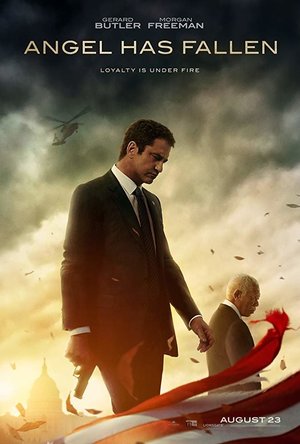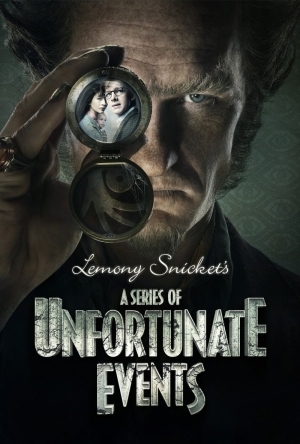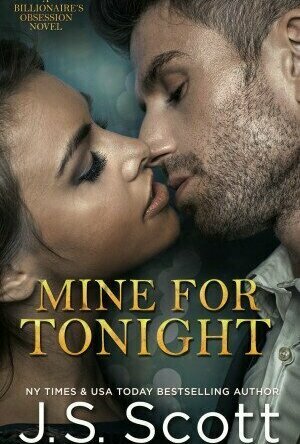Search

The Better Angels of Our Nature: A History of Violence and Humanity
Book
-Shortlisted for the Samuel Johnson Prize 2012 This acclaimed book by Steven Pinker, author of The...
Lee (2222 KP) rated Angel Has Fallen (2019) in Movies
Aug 23, 2019
Gerard Butler returns once again as secret service agent Mike Banning in this third entry in the 'fallen' series. The first movie, Olympus Has Fallen (not to be confused with White House Down, the Channing Tatum movie which was also released in 2013 and also covered a similar plot!) saw Banning trapped in the White House during a terrorist attack. It had an enjoyable Die Hard feel to it, and a sequel was inevitable. London Has Fallen (2016) saw Banning venture to London for the funeral of the Prime Minister and becoming involved in a terrorist plot to assassinate the world leaders who were in attendance. Not quite as good as Olympus, losing that enclosed claustrophobic setting from the first movie, but it was still a fun piece of action.
Which brings us to Angel Has Fallen. That angel being Mike Banning, guardian angel to President Trumbull (Morgan Freeman) who has now been promoted from vice president in the last movie. Mike is starting to feel the strain of old age and his years of being a hero and one man army - insomnia, a reliance on pills, migraines. His secret service colleagues, even the president, are noticing his health issues and his doctor plainly tells him "You're a disaster waiting to happen"!
This time round, the terrorist attack comes in the form of a swarm of drones, which appear in the skies over the lake where the president is fishing on a boat. Taking out the secret service team on protection duty, both the president and Banning are forced into the water in order to try and avoid being blown to pieces. But, instead of being hailed a hero once again, Banning is now accused of masterminding and orchestrating the attack and it becomes clear that he is being setup, forcing him to go on the run in order to try and clear his name.
Once again, it's all ridiculous crowd pleasing stuff. Some elements make absolutely no sense whatsoever, and it's not exactly difficult to work out who the bad guys are right from the offset - hell, the trailer even gives one of them away! The action for the most part is fairly enjoyable, although it does suffer from the occasional bit of dodgy CGI and there are moments of dark close-up action - quickly edited, shaky camera work, which make it frustratingly difficult to work out what on earth is going on at times.
As with London Has Fallen, we lose that claustrophobic and confined Die Hard action once again, giving us something more alike to The Fugitive and a poor mans John Wick 3. But overall, it's still an enjoyable ride, with a fun cameo from Nick Nolte as Mike's long lost father and a third act which actually delivers.
Which brings us to Angel Has Fallen. That angel being Mike Banning, guardian angel to President Trumbull (Morgan Freeman) who has now been promoted from vice president in the last movie. Mike is starting to feel the strain of old age and his years of being a hero and one man army - insomnia, a reliance on pills, migraines. His secret service colleagues, even the president, are noticing his health issues and his doctor plainly tells him "You're a disaster waiting to happen"!
This time round, the terrorist attack comes in the form of a swarm of drones, which appear in the skies over the lake where the president is fishing on a boat. Taking out the secret service team on protection duty, both the president and Banning are forced into the water in order to try and avoid being blown to pieces. But, instead of being hailed a hero once again, Banning is now accused of masterminding and orchestrating the attack and it becomes clear that he is being setup, forcing him to go on the run in order to try and clear his name.
Once again, it's all ridiculous crowd pleasing stuff. Some elements make absolutely no sense whatsoever, and it's not exactly difficult to work out who the bad guys are right from the offset - hell, the trailer even gives one of them away! The action for the most part is fairly enjoyable, although it does suffer from the occasional bit of dodgy CGI and there are moments of dark close-up action - quickly edited, shaky camera work, which make it frustratingly difficult to work out what on earth is going on at times.
As with London Has Fallen, we lose that claustrophobic and confined Die Hard action once again, giving us something more alike to The Fugitive and a poor mans John Wick 3. But overall, it's still an enjoyable ride, with a fun cameo from Nick Nolte as Mike's long lost father and a third act which actually delivers.

Beware of Pity
Anthea Bell, Stefan Zweig and David Pearson
Book
Stefan's Zweig's Beware of Pity is an almost unbearably tense and powerful tale of unrequited love...
Lee (2222 KP) rated A Series of Unfortunate Events - Season 1 in TV
Jul 26, 2017
The latest adaptation of the thirteen books comprising ‘A Series of Unfortunate Events’ makes its way onto Netflix, the last being the 2004 film starring Jim Carrey. I haven’t read any of the books, or seen the movie. However my daughter has, and she loves them (the books, not so much the movie). So, we sat down together to watch season 1, which covers the first four books in the series, with two episodes devoted to each book.
The unfortunate events all involve three children – Violet, Klaus and Sunny Baudelaire, whose parents are killed in a fire at the beginning of the story. They inherit a vast fortune, which will not come into their possession until Violet comes of age, and are placed in the care of Count Olaf, supposedly their only living relative. Olaf is only concerned with getting his hands on the Baudelaire fortune though and the story covers his hilarious attempts to do so, quite often involving ridiculous disguises and usually involving further unfortunate unpleasantness for the children. The children initially escape Olaf, moving between a succession of guardians and locations for each book, only for him to catch up with them once more.
Quite simply, the show is excellent. I have to admit that the first episode took me a little while to settle into but from the opening credits, urging you to ‘look away’, through to the big budget Burtonesque sets and vibrant colours, the attention to detail is simply incredible. Partick Warburton is Lemony Snickett, our narrator, wryly and brilliantly interjecting at various points to explain details and guide us through the story. Neil Patrick Harris is Count Olaf, in full on pantomime villain mode, and I absolutely loved the humour he brought to every single scene he’s in, whether he’s as himself or disguised as a scientist/sailor/woman! My only gripe is that he’s never quite villainous or evil enough, more along the lines of a harmless Dick Dastardly as each desperately elaborate scheme is so easily foiled. He’s aided along the way by a group of oddball goons, who are all part of his theatre group – more creepy than scary – but it doesn’t detract from the shows overall enjoyment, and I guess this is a family show after all! There are also a few good cameos along the way – Don Johnson as owner of the Miserable Mill, and Rhys Darby as his downtrodden partner, for example. All of the supporting cast are all brilliant, however the main stars of the show are the children. Superb young actors, right down to little baby Sunny who cutely talks in baby speak (subtitled for us to understand!), gnawing her way through anything she can get her hands on and surviving all manner of unfortunate events the children find themselves in.
Things get a little formulaic after a while – the children settle in with a new guardian, Count Olaf appears in a new guise and with a new plot, the children foil his plan and move on again. However, things change slightly for the final few episodes and throughout the season we gradually discover a deep background of secrets and conspiracies, which I’m sure will help keep the story moving for the remainder of the seasons to come. And there are a few twists and turns along the way too. Overall I was hugely impressed with the show, as was my daughter. It appears to be a very faithful adaptation of what is a hugely popular series of books, and I’m very much looking forward to what’s to come next.
The unfortunate events all involve three children – Violet, Klaus and Sunny Baudelaire, whose parents are killed in a fire at the beginning of the story. They inherit a vast fortune, which will not come into their possession until Violet comes of age, and are placed in the care of Count Olaf, supposedly their only living relative. Olaf is only concerned with getting his hands on the Baudelaire fortune though and the story covers his hilarious attempts to do so, quite often involving ridiculous disguises and usually involving further unfortunate unpleasantness for the children. The children initially escape Olaf, moving between a succession of guardians and locations for each book, only for him to catch up with them once more.
Quite simply, the show is excellent. I have to admit that the first episode took me a little while to settle into but from the opening credits, urging you to ‘look away’, through to the big budget Burtonesque sets and vibrant colours, the attention to detail is simply incredible. Partick Warburton is Lemony Snickett, our narrator, wryly and brilliantly interjecting at various points to explain details and guide us through the story. Neil Patrick Harris is Count Olaf, in full on pantomime villain mode, and I absolutely loved the humour he brought to every single scene he’s in, whether he’s as himself or disguised as a scientist/sailor/woman! My only gripe is that he’s never quite villainous or evil enough, more along the lines of a harmless Dick Dastardly as each desperately elaborate scheme is so easily foiled. He’s aided along the way by a group of oddball goons, who are all part of his theatre group – more creepy than scary – but it doesn’t detract from the shows overall enjoyment, and I guess this is a family show after all! There are also a few good cameos along the way – Don Johnson as owner of the Miserable Mill, and Rhys Darby as his downtrodden partner, for example. All of the supporting cast are all brilliant, however the main stars of the show are the children. Superb young actors, right down to little baby Sunny who cutely talks in baby speak (subtitled for us to understand!), gnawing her way through anything she can get her hands on and surviving all manner of unfortunate events the children find themselves in.
Things get a little formulaic after a while – the children settle in with a new guardian, Count Olaf appears in a new guise and with a new plot, the children foil his plan and move on again. However, things change slightly for the final few episodes and throughout the season we gradually discover a deep background of secrets and conspiracies, which I’m sure will help keep the story moving for the remainder of the seasons to come. And there are a few twists and turns along the way too. Overall I was hugely impressed with the show, as was my daughter. It appears to be a very faithful adaptation of what is a hugely popular series of books, and I’m very much looking forward to what’s to come next.
TheDefunctDiva (304 KP) rated Charlie and the Chocolate Factory (2005) in Movies
Sep 27, 2017
C is for Candy
Contains spoilers, click to show
And yes, I certainly mean eye candy. Johnny Depp is gorgeous despite the makeup artists’ attempts to make him seem pale and awkward. My brain isn’t working properly due to lack of sleep so I’ll just go ahead and warn you that this is more a regurgitation than a review. Read at your own risk, because I even give the entire ending of the movie away…
This is the story of Charlie Bucket, an impoverished but genuinely good-natured child. His dream is one of millions: to win a Golden Ticket, and tour Willy Wonka’s chocolate factory in the hopes of obtaining an even bigger prize. If this plot sounds familiar, it’s because you’ve seen Willy Wonka and the Chocolate Factory, or have read the book. I profess my ignorance, for I haven’t read the book Roald Dahl wrote, and therefore have no idea which movie version adheres more strictly to the original text.
Let’s move on by more closely examining Burton’s version. Despite some of the world’s most recalcitrant children winning the four other tickets, Charlie lucks out and becomes the recipient of the last Golden Ticket. This brings great joy to his family and even makes the bed-ridden Grandpa Joe ambulatory again. I love Charlie’s family, especially because his Dad works in a toothpaste factory but everyone in the family has nasty teeth.
The glorious day of the tour arrives and each child shows up with a parental or grandparental guardian. They are introduced first to Willy Wonka by means of a puppet show, which ends in a glorious and unintentional fire. With the smoldering puppets dying disturbingly in the background, Wonka appears with cue cards, giving the impression that the man has no idea how to socially interact. The group then enters the factory.
The first child to be eliminated from the contest is Augustus Gloop. The group has been given free reign of a room made entirely of candy. Augustus cannot resist the lake of chocolate, and he falls in. He is sucked up a tube that leads to the fudge room. Then the Oompa Loompas appear and perform a song engineered for this particular predictable tragedy.
The Oompa Loompas in Burton’s version are short, and they do not have orange hair, but they all have the same face and body. Deep Roy, the actor portraying the Oompa Loompas, deserved an Oscar for effort in my book, for the special features indicate how very involved he was with this production. The songs sung by the Oompa Loompas varied significantly from those in the older version. In fact, I enjoyed how each song of admonishment involved a specific genre of music.
Next Violet Beauregard, the competitive one, is turned into a blueberry by chewing gum. And then we have the case of the sad and supremely spoiled Veruca Salt, who ends up getting thrown down a garbage chute by some very judgmental and highly trained squirrels. After each young lady has been expelled from the contest, the Oompa Loompas say adieu with a musical number.
Throughout the film, Wonka has flashbacks about his father. It seems the elder Wonka was a dentist, and he forbade the young Willy to eat candy. Several scenes show Willy Wonka defying the will of his father, which ultimately led Willy to be a world-renowned chocolatier. Though it was nice to have this subplot as an explanation for some of Wonka’s erratic behavior, I found that I like Gene Wilder’s portrayal of Willy Wonka better. He was whimsical and strange, but the film and the actor seemed to offer no explanation as to how he got that way.
Mike Teavee, a young boy with the attention span of a gnat on amphetamines, is the last of the factory’s victims. He decides to teleport himself into a television screen, which I’m sure seemed like a good idea at the time. Teavee is shown in peril as an Oompa Loompa flips the channels. Now incredibly small, Wonka decides that the best remedy for Mike is the taffy pulling machine.
Charlie is the only child left, and Wonka ushers Charlie and Grandpa Joe into the glass elevator. According to the button, they are going up and out. Indeed, they do, eventually stopping when they crash through the roof of the Bucket house. The grand prize is revealed: Willy Wonka is giving Charlie the factory. This becomes impossible when Wonka forces Charlie to choose between factory and family. Eventually, Wonka reconciles his Daddy issues and allows Charlie’s family to stay at the factory.
The visual effects in this film were amazing. As mentioned previously, Deep Roy was incredible as the face of the many Oompa Loompas. I thought the child actors in this film were also impressive in how they perfectly captured their respective vices. Overall, this was a good film. And yet I still miss moments from the older film, especially the poem with “the grisly reaper mowing.” Call me sentimental…
This is the story of Charlie Bucket, an impoverished but genuinely good-natured child. His dream is one of millions: to win a Golden Ticket, and tour Willy Wonka’s chocolate factory in the hopes of obtaining an even bigger prize. If this plot sounds familiar, it’s because you’ve seen Willy Wonka and the Chocolate Factory, or have read the book. I profess my ignorance, for I haven’t read the book Roald Dahl wrote, and therefore have no idea which movie version adheres more strictly to the original text.
Let’s move on by more closely examining Burton’s version. Despite some of the world’s most recalcitrant children winning the four other tickets, Charlie lucks out and becomes the recipient of the last Golden Ticket. This brings great joy to his family and even makes the bed-ridden Grandpa Joe ambulatory again. I love Charlie’s family, especially because his Dad works in a toothpaste factory but everyone in the family has nasty teeth.
The glorious day of the tour arrives and each child shows up with a parental or grandparental guardian. They are introduced first to Willy Wonka by means of a puppet show, which ends in a glorious and unintentional fire. With the smoldering puppets dying disturbingly in the background, Wonka appears with cue cards, giving the impression that the man has no idea how to socially interact. The group then enters the factory.
The first child to be eliminated from the contest is Augustus Gloop. The group has been given free reign of a room made entirely of candy. Augustus cannot resist the lake of chocolate, and he falls in. He is sucked up a tube that leads to the fudge room. Then the Oompa Loompas appear and perform a song engineered for this particular predictable tragedy.
The Oompa Loompas in Burton’s version are short, and they do not have orange hair, but they all have the same face and body. Deep Roy, the actor portraying the Oompa Loompas, deserved an Oscar for effort in my book, for the special features indicate how very involved he was with this production. The songs sung by the Oompa Loompas varied significantly from those in the older version. In fact, I enjoyed how each song of admonishment involved a specific genre of music.
Next Violet Beauregard, the competitive one, is turned into a blueberry by chewing gum. And then we have the case of the sad and supremely spoiled Veruca Salt, who ends up getting thrown down a garbage chute by some very judgmental and highly trained squirrels. After each young lady has been expelled from the contest, the Oompa Loompas say adieu with a musical number.
Throughout the film, Wonka has flashbacks about his father. It seems the elder Wonka was a dentist, and he forbade the young Willy to eat candy. Several scenes show Willy Wonka defying the will of his father, which ultimately led Willy to be a world-renowned chocolatier. Though it was nice to have this subplot as an explanation for some of Wonka’s erratic behavior, I found that I like Gene Wilder’s portrayal of Willy Wonka better. He was whimsical and strange, but the film and the actor seemed to offer no explanation as to how he got that way.
Mike Teavee, a young boy with the attention span of a gnat on amphetamines, is the last of the factory’s victims. He decides to teleport himself into a television screen, which I’m sure seemed like a good idea at the time. Teavee is shown in peril as an Oompa Loompa flips the channels. Now incredibly small, Wonka decides that the best remedy for Mike is the taffy pulling machine.
Charlie is the only child left, and Wonka ushers Charlie and Grandpa Joe into the glass elevator. According to the button, they are going up and out. Indeed, they do, eventually stopping when they crash through the roof of the Bucket house. The grand prize is revealed: Willy Wonka is giving Charlie the factory. This becomes impossible when Wonka forces Charlie to choose between factory and family. Eventually, Wonka reconciles his Daddy issues and allows Charlie’s family to stay at the factory.
The visual effects in this film were amazing. As mentioned previously, Deep Roy was incredible as the face of the many Oompa Loompas. I thought the child actors in this film were also impressive in how they perfectly captured their respective vices. Overall, this was a good film. And yet I still miss moments from the older film, especially the poem with “the grisly reaper mowing.” Call me sentimental…
Purple Phoenix Games (2266 KP) rated Tutankhamun in Tabletop Games
Jul 9, 2021
Tutankhamun (per dictionary.com, the pronunciation is as such: [ toot-ahng-kah-muhn ]) is regularly shortened and often referred to as “King Tut.” My real question is that if the first syllable is “toot,” why do we not call him King Toot? I have a 5 year old boy and a 2 year old girl at the time of this writing, so I can tell you EXACTLY why we don’t call him King Toot, but that’s for another discussion. Never having played the original version, will I enjoy this new version of the game by world-renowned designer Dr. Reiner Knizia?
In Tutankhamun, players take on the roles of Egyptian priests attempting to cleanse their souls by gifting the sarcophagus with relics found along the Nile River. The priest who can cleanse their soul quickest will be proclaimed the next High Priest and winner of the game!
DISCLAIMER: We were provided a copy of this game for the purposes of this review. This is a retail copy of the game, so what you see in these photos is exactly what would be received in your box. I do not intend to cover every single rule included in the rulebook, but will describe the overall game flow and major rule set so that our readers may get a sense of how the game plays. For more in depth rules, you may purchase a copy online or from your FLGS. -T
To setup, place the King Tut sarcophagus on the table somewhere inside the box bottom. From this starting place (or you could place these components last I suppose), begin the laborious job of creating the Nile from the trapezoidal Relic TIles. This part took me a good several minutes each game. Place out the Underworld Mat near the start of the Nile, and place upon it the two Guardian Statue standees. From there give every player a reference card, have them choose a player color, place their boats at the start of the Nile, and Canopic Jar scoring markers on the appropriate space along the box bottom score track. The game may now begin!
Tutankhamun is played in turns starting with the starting player and proceeding clockwise. The starting player will choose ANY Relic Tile to collect and move their boat to that location. Once collected, the player will check to make sure there are still matching Relics along the Nile. If so, then play continues to the next player. If the active player had collected the last Relic of that type still active in the game, then the Relic type is scored.
Each Relic Tile features art of a Relic, a God, or a Scarab Ring. Relics come in sets, and when the final Relic of its type is collected, scoring immediately follows. Whichever player possesses the most Relic Tiles of the one being scored will earn points (or rather, negative points, as the priests are trying to cleanse their souls down to the winning score of zero) equal to the number printed on the tile. That number stands for the score earned as well as the number of Relics of that type in the game. The player with the second most Relics of the scored type will score half the number printed on the tile. All others do not score.
God Tiles feature art of one of five ancient Egyptian Gods: Osiris, Isis, Ra, Thoth, and Horus. Each of these Gods provide the collecting player with special powers to be used during the turn, and are always positive for the player.
Finally, Scarab Ring tiles are special in that they feature no number upon them. There are 10 tiles in the game, and as soon as a player collects one they immediately score one point (or one negative point). These tiles are not thrown into the box bottom, as the other scoring tiles are once scored, but are kept with the players to be scored at the end of the game. The player holding the most Scarab Tiles scores five negative points.
Any tile along the Nile that has been passed by all players is deposited onto the Underworld Mat and not added to the box bottom with the King Tut sarcophagus. Tiles may still be collected from the Underworld by permission of the Gods being collected in-game. Whichever priest is able to dwindle down their points and cleanse their soul first will win the game and become the next High Priest of Egypt!
Components. I am more and more becoming a fan of everything 25th Century Games is putting out. This is certainly no exception. I have seen photos of the original versions of this game, entitled Tutankhamen (with an E at the end instead of a U) and this game was certainly begging for a renovation. All the components have updated art, more vibrant colors, and the game even includes luxurious (and completely unnecessary) components. These are the very cool, but very unnecessary King Tut sarcophagus, and the Guardian Statue standees that add nothing to the gameplay but definitely help set the mood and theme. That all said, this version looks amazing on the table and has nearly infinite setup configurations!
What I like most about the game is the fact that on a player’s turn they can literally move forward to ANYWHERE along the Nile to gather whatever Relic they wish. They can pass up a tile or twelve along the way to snatch exactly what they want. However, the quicker a player reaches the sarcophagus does not automatically make them the winner. No, they still need to reduce their soul spirit score to zero in order to win (or be closest by the time all players reach the final spot). Conversely, dilly-dallying along the River just picking up every available tile also will not guarantee a victory. Specializing in a select few items may be the ticket to a victory, or setting oneself to win a couple types and win runner-up on the remainder may be a great path to victory.
Unlike many other games with this lazy race mechanic, the player furthest back does NOT get to keep taking turns to catch up (I’m looking at you, Tokaido), but rather just means that player has many more options ahead of themselves than the other players have. This is very interesting to me, and definitely something worth exploring more. It makes for tough turns when players have to really crunch which options are best for them: take the tile right ahead of them, diversify vs bolster the collection, or hate block another player by taking what you know they need. Ahh, so beautiful are the choices given!
At the end of the day (and this review), Purple Phoenix Games gives this one an Obama-meme-where-he-is-drinking-a-beer-and-giving-a-thumbs-up 5 / 6. I would certainly not have purchased this game in its original form had I seen it in a game store. However, with the changes made to make it more pretty, I would have given it a chance. I am so very glad I have the opportunity to play this a lot, as I can see this getting to the table allllllll the time. It is right up my alley, and I place it high among other Knizia games. Long live King Toot!!
In Tutankhamun, players take on the roles of Egyptian priests attempting to cleanse their souls by gifting the sarcophagus with relics found along the Nile River. The priest who can cleanse their soul quickest will be proclaimed the next High Priest and winner of the game!
DISCLAIMER: We were provided a copy of this game for the purposes of this review. This is a retail copy of the game, so what you see in these photos is exactly what would be received in your box. I do not intend to cover every single rule included in the rulebook, but will describe the overall game flow and major rule set so that our readers may get a sense of how the game plays. For more in depth rules, you may purchase a copy online or from your FLGS. -T
To setup, place the King Tut sarcophagus on the table somewhere inside the box bottom. From this starting place (or you could place these components last I suppose), begin the laborious job of creating the Nile from the trapezoidal Relic TIles. This part took me a good several minutes each game. Place out the Underworld Mat near the start of the Nile, and place upon it the two Guardian Statue standees. From there give every player a reference card, have them choose a player color, place their boats at the start of the Nile, and Canopic Jar scoring markers on the appropriate space along the box bottom score track. The game may now begin!
Tutankhamun is played in turns starting with the starting player and proceeding clockwise. The starting player will choose ANY Relic Tile to collect and move their boat to that location. Once collected, the player will check to make sure there are still matching Relics along the Nile. If so, then play continues to the next player. If the active player had collected the last Relic of that type still active in the game, then the Relic type is scored.
Each Relic Tile features art of a Relic, a God, or a Scarab Ring. Relics come in sets, and when the final Relic of its type is collected, scoring immediately follows. Whichever player possesses the most Relic Tiles of the one being scored will earn points (or rather, negative points, as the priests are trying to cleanse their souls down to the winning score of zero) equal to the number printed on the tile. That number stands for the score earned as well as the number of Relics of that type in the game. The player with the second most Relics of the scored type will score half the number printed on the tile. All others do not score.
God Tiles feature art of one of five ancient Egyptian Gods: Osiris, Isis, Ra, Thoth, and Horus. Each of these Gods provide the collecting player with special powers to be used during the turn, and are always positive for the player.
Finally, Scarab Ring tiles are special in that they feature no number upon them. There are 10 tiles in the game, and as soon as a player collects one they immediately score one point (or one negative point). These tiles are not thrown into the box bottom, as the other scoring tiles are once scored, but are kept with the players to be scored at the end of the game. The player holding the most Scarab Tiles scores five negative points.
Any tile along the Nile that has been passed by all players is deposited onto the Underworld Mat and not added to the box bottom with the King Tut sarcophagus. Tiles may still be collected from the Underworld by permission of the Gods being collected in-game. Whichever priest is able to dwindle down their points and cleanse their soul first will win the game and become the next High Priest of Egypt!
Components. I am more and more becoming a fan of everything 25th Century Games is putting out. This is certainly no exception. I have seen photos of the original versions of this game, entitled Tutankhamen (with an E at the end instead of a U) and this game was certainly begging for a renovation. All the components have updated art, more vibrant colors, and the game even includes luxurious (and completely unnecessary) components. These are the very cool, but very unnecessary King Tut sarcophagus, and the Guardian Statue standees that add nothing to the gameplay but definitely help set the mood and theme. That all said, this version looks amazing on the table and has nearly infinite setup configurations!
What I like most about the game is the fact that on a player’s turn they can literally move forward to ANYWHERE along the Nile to gather whatever Relic they wish. They can pass up a tile or twelve along the way to snatch exactly what they want. However, the quicker a player reaches the sarcophagus does not automatically make them the winner. No, they still need to reduce their soul spirit score to zero in order to win (or be closest by the time all players reach the final spot). Conversely, dilly-dallying along the River just picking up every available tile also will not guarantee a victory. Specializing in a select few items may be the ticket to a victory, or setting oneself to win a couple types and win runner-up on the remainder may be a great path to victory.
Unlike many other games with this lazy race mechanic, the player furthest back does NOT get to keep taking turns to catch up (I’m looking at you, Tokaido), but rather just means that player has many more options ahead of themselves than the other players have. This is very interesting to me, and definitely something worth exploring more. It makes for tough turns when players have to really crunch which options are best for them: take the tile right ahead of them, diversify vs bolster the collection, or hate block another player by taking what you know they need. Ahh, so beautiful are the choices given!
At the end of the day (and this review), Purple Phoenix Games gives this one an Obama-meme-where-he-is-drinking-a-beer-and-giving-a-thumbs-up 5 / 6. I would certainly not have purchased this game in its original form had I seen it in a game store. However, with the changes made to make it more pretty, I would have given it a chance. I am so very glad I have the opportunity to play this a lot, as I can see this getting to the table allllllll the time. It is right up my alley, and I place it high among other Knizia games. Long live King Toot!!

Nothing is Sacrosanct: No One Can Hide from Their Sins Forever
Book
Nothing is Sacrosanct: Intense, Raw Novel Takes Calculated Revenge on Child Abuse Aggressors;...

The Art of Losing by The Anchoress
Album
AWARD-WINNING WELSH MULTI-INSTRUMENTALIST THE ANCHORESS RETURNS WITH HER CRITICALLY ACCLAIMED SECOND...
Kara Skinner (332 KP) rated Mine for Tonight in Books
Nov 3, 2019
Nothing says sexy like a brooding billionaire. I mean, in a world of car payments, nine-to-five nightmares, and student loans hanging over people’s heads like spiders on their bedroom ceilings, it can be a lot of fun to daydream about a billionaire lover who will take it all away. Unfortunately, a lot of them are really bad, like Fifty Shades of Writing So Bad I Want All The Characters to Spontaneously Combust. The damsel in distress routine can also be sadly lacking plot and character development, like in The Doctor’s Slave. However, Mine for Tonight is definitely one of the good ones.
I have to admit, I picked this book up because the heroine’s name is Kara. I mean, how perfect is that, right? And I really liked this book. It was difficult for me to not get a little creeped out by Simon. Like, what stable-minded person follows someone around for over a year without even meeting her? I know he’s more like a guardian angel wanting to protect her and less like a stalker wanting to kill her, but really. There’s a difference between socially awkward and asking for a restraining order. But I loved how much he cares for Kara. Even though he’s a private person, he’s willing to open up his home to her without payment. (Yes, he does ask her to sleep with him, but he makes it pretty clear that that part is optional.) He’s definitely damaged, as is Kara. She’s struggling with a lot of things, like her last relationship which crashed and burned, and her parents’ deaths. Being stuck in nickel and dime mode after years of supporting herself makes it hard for Kara to accept Simon’s help, especially when he likes to spoil her. Her inability to stay indebted was why Simon gave her the sex payment option to begin with, although she ended up taking it because she wanted it. I really liked how hard-working she was. She’s not a traditional damsel in distress to be sure, and she keeps her independence even after Simon takes her in. Long story short, it didn’t take me long to buy the entire series.
I have to admit, I picked this book up because the heroine’s name is Kara. I mean, how perfect is that, right? And I really liked this book. It was difficult for me to not get a little creeped out by Simon. Like, what stable-minded person follows someone around for over a year without even meeting her? I know he’s more like a guardian angel wanting to protect her and less like a stalker wanting to kill her, but really. There’s a difference between socially awkward and asking for a restraining order. But I loved how much he cares for Kara. Even though he’s a private person, he’s willing to open up his home to her without payment. (Yes, he does ask her to sleep with him, but he makes it pretty clear that that part is optional.) He’s definitely damaged, as is Kara. She’s struggling with a lot of things, like her last relationship which crashed and burned, and her parents’ deaths. Being stuck in nickel and dime mode after years of supporting herself makes it hard for Kara to accept Simon’s help, especially when he likes to spoil her. Her inability to stay indebted was why Simon gave her the sex payment option to begin with, although she ended up taking it because she wanted it. I really liked how hard-working she was. She’s not a traditional damsel in distress to be sure, and she keeps her independence even after Simon takes her in. Long story short, it didn’t take me long to buy the entire series.
I am most familiar with the tale of the Phantom of the Opera from the musical of that name. It is likely different from the book by Gaston Leroux. I havent read the original novel that inspired the opera and RoseBlood itself in years. As a result, I am sure that I miss some nods to the original or nuances that people more familiar with the story will understand.
Our main character, Rune has a unique relationship with music. Certain works, usually arias written for women, speak to her and make their home in her soul. Upon hearing the soaring notes, she is immediately overtaken by the need to sing and expel the music. When she was younger and her father accompanied her on the violin, those moments were glorious but they did not last. Her father became ill and then died, leaving her with no accompaniment and the music began to cage her. No longer could she just release the notes inside her, but they took something with them and left her feeling ill. If the piece spoke to her she had no choice but let it overwhelm her vocal cords and release.
The Phantom lives in his classic dark dwelling beneath the school, which was once an opera house. He travels the underground river via a boat, has various neglected instruments strewn about and is friendly with a red swan. Just your normal phantom behavior. Pretty early on, we learn that who we first believe to be this iteration of the phantom is not the one from the book and are introduced to the Phantom himself. The Phantom is Thorns guardian and teacher, although he has been sickly lately and Thorn has been taking care of him.
There is an interesting addition in this version of auras and chakras. Rune, Thorn and the Phantom are able to see the music as it fills the air with colour. The Phantom even taught Thorn how to harness that auric energy from emotions, and the even more powerful music, to do things like manipulating feelings and thoughts. Together, Thorn and the Phantom plan to alienate Rune from her teachers and classmates until she discovers the lair surrenders to the darkness and they hope she gives up her music to them.
Runes first day at RoseBlood does not go exactly as she hoped, but her new friend and peer advisor, Sunny introduces her to Jackson Reynolds. My immediate feelings about the two were that they were playing this retelling's version of Meg and Raoul, whether that is, in fact, true you shall have to discover by reading the book. Her relationship with her Phantom parallels that of the original, as he helps her to calm the music inside her.
Although the author provides reasoning later on for their immediate connection and trust, it still feels like insta-love. To know someone for only a short while and frequently consider abandoning or betraying everything youve ever known and believed in for the past decade. That is intense and not something people could just easily give up on whether it is the right way or not.
While I did enjoy this book, I probably would not go out and purchase a copy for myself. In order to make this the next chapter of the Phantom of the Opera, rather than a re-telling the author added some different aspects to the story that were not in the original. I am not entirely sure how I feel about this change it was interesting but as I was reading I didnt feel or believe that it was as well thought out as it should have been. I think that the idea of the story was a lot more intriguing than the actual execution of it ended up being.
After the conclusion of the book, there is a note from the author that describes what inspired her to write this version of the story. It shows where she got each of her ideas and the amount of thought that went into them. As I stated before, I see the merit of each addition (and admire the research that went into them) but it just seemed to be a little too much added and it became unwieldy.
Our main character, Rune has a unique relationship with music. Certain works, usually arias written for women, speak to her and make their home in her soul. Upon hearing the soaring notes, she is immediately overtaken by the need to sing and expel the music. When she was younger and her father accompanied her on the violin, those moments were glorious but they did not last. Her father became ill and then died, leaving her with no accompaniment and the music began to cage her. No longer could she just release the notes inside her, but they took something with them and left her feeling ill. If the piece spoke to her she had no choice but let it overwhelm her vocal cords and release.
The Phantom lives in his classic dark dwelling beneath the school, which was once an opera house. He travels the underground river via a boat, has various neglected instruments strewn about and is friendly with a red swan. Just your normal phantom behavior. Pretty early on, we learn that who we first believe to be this iteration of the phantom is not the one from the book and are introduced to the Phantom himself. The Phantom is Thorns guardian and teacher, although he has been sickly lately and Thorn has been taking care of him.
There is an interesting addition in this version of auras and chakras. Rune, Thorn and the Phantom are able to see the music as it fills the air with colour. The Phantom even taught Thorn how to harness that auric energy from emotions, and the even more powerful music, to do things like manipulating feelings and thoughts. Together, Thorn and the Phantom plan to alienate Rune from her teachers and classmates until she discovers the lair surrenders to the darkness and they hope she gives up her music to them.
Runes first day at RoseBlood does not go exactly as she hoped, but her new friend and peer advisor, Sunny introduces her to Jackson Reynolds. My immediate feelings about the two were that they were playing this retelling's version of Meg and Raoul, whether that is, in fact, true you shall have to discover by reading the book. Her relationship with her Phantom parallels that of the original, as he helps her to calm the music inside her.
Although the author provides reasoning later on for their immediate connection and trust, it still feels like insta-love. To know someone for only a short while and frequently consider abandoning or betraying everything youve ever known and believed in for the past decade. That is intense and not something people could just easily give up on whether it is the right way or not.
While I did enjoy this book, I probably would not go out and purchase a copy for myself. In order to make this the next chapter of the Phantom of the Opera, rather than a re-telling the author added some different aspects to the story that were not in the original. I am not entirely sure how I feel about this change it was interesting but as I was reading I didnt feel or believe that it was as well thought out as it should have been. I think that the idea of the story was a lot more intriguing than the actual execution of it ended up being.
After the conclusion of the book, there is a note from the author that describes what inspired her to write this version of the story. It shows where she got each of her ideas and the amount of thought that went into them. As I stated before, I see the merit of each addition (and admire the research that went into them) but it just seemed to be a little too much added and it became unwieldy.





